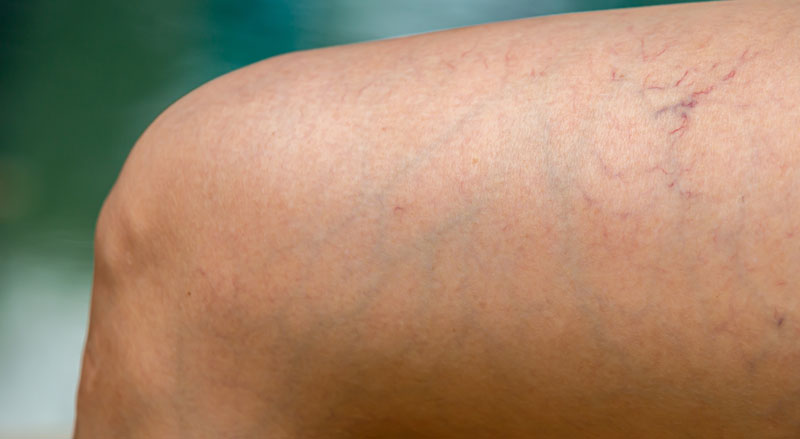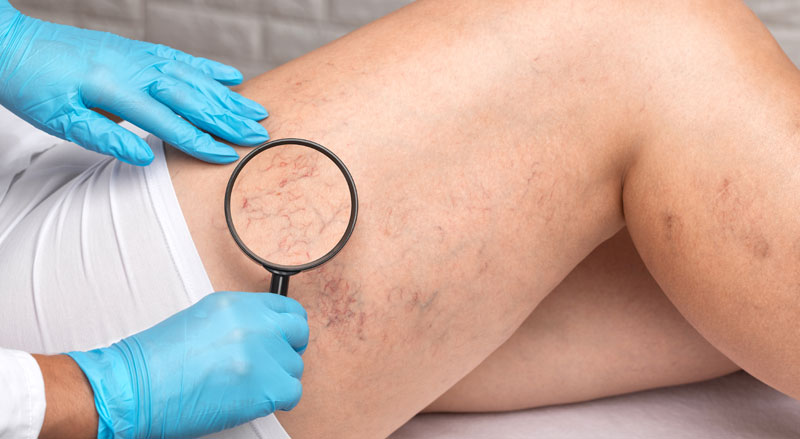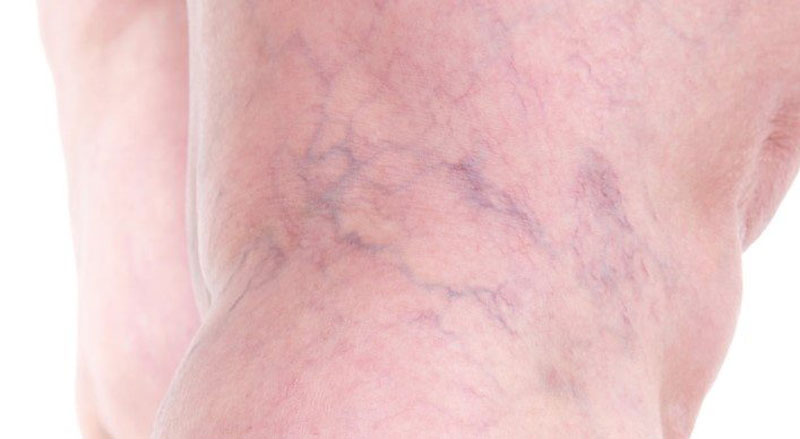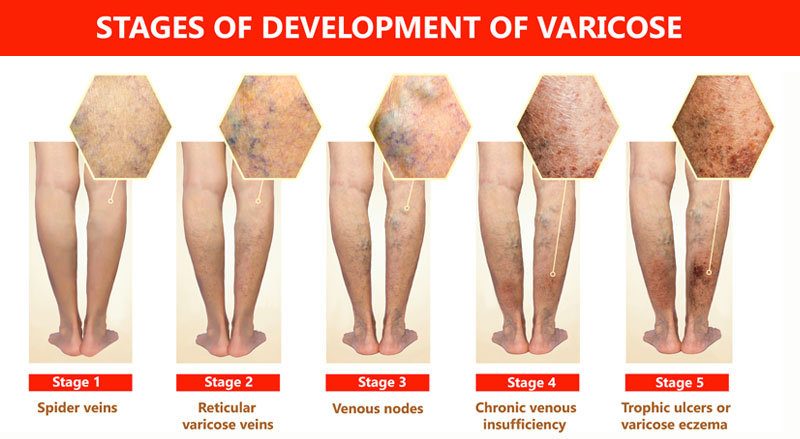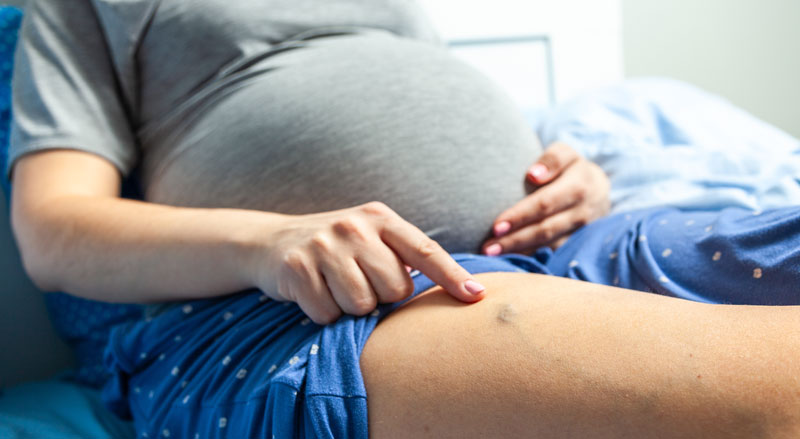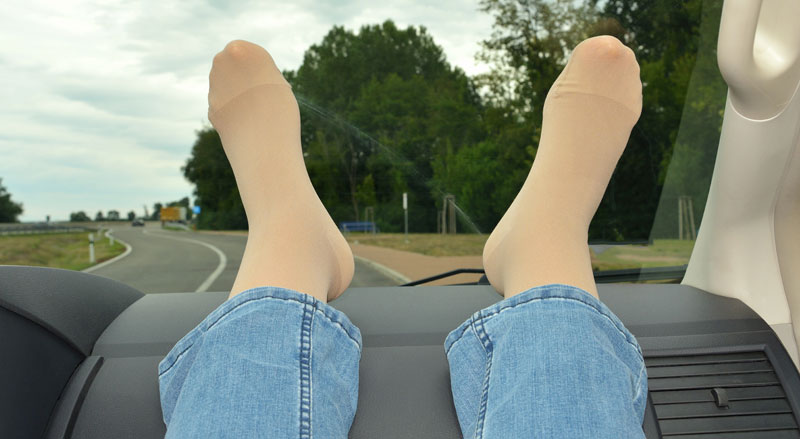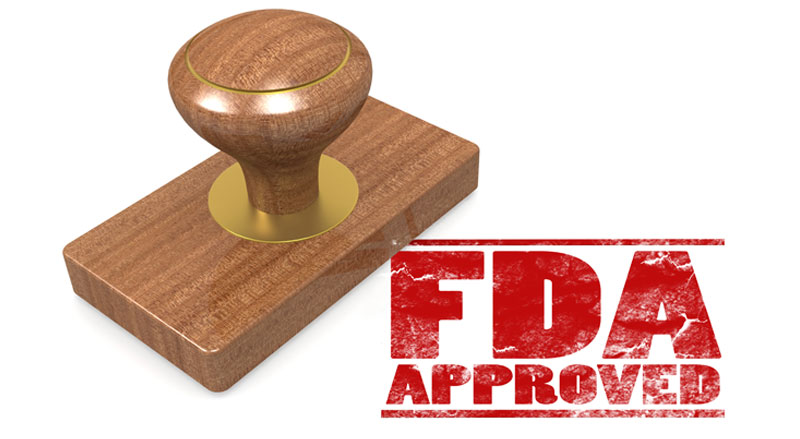Most people know the difference between spider veins and varicose veins. But what about spider veins vs. reticular veins? What’s the difference?
Veins are the structures that bring blood up from your legs and back to your heart. Three major vein issues that people commonly notice on their body are:
- Spider veins
- Reticular veins
- Varicose veins
How Can I Tell the Difference Between Veins?
Spider Veins
Spider veins, also called telangiectasias, are the smallest veins measuring 1mm or less. They appear close to the surface of the skin and often take on a “tree-like” appearance with the veins looking like tree branches.
Spider veins mainly occur on the thighs, ankles, or calves
These veins can vary in color, ranging from blue/purple, to red or pink.
Usually, these veins don’t cause any physical symptoms unless they occur in larger clusters. Some people may feel slight discomfort in a heavily veined area.
Reticular veins
Reticular veins measure between 1mm and 3mm in diameter and are located just below the skin’s surface. They are slightly larger than spider veins.
Reticular veins exist a little deeper in the skin than spider veins, which run more along the surface. Unlike varicose veins, they don’t protrude from beneath the skin.
Reticular veins are found in the legs—commonly on the back or inner thigh—but can occur on the face, breasts, ankles, or knees.
These veins are usually not a medical problem. More often, people are concerned with the aesthetic issues they cause.
Since reticular veins feed into spider veins, they are also called feeder veins. You often see reticular veins right near spider vein clusters.
These veins are blue/green or purple. However, they can take on a ropey appearance and exist in clusters, giving the skin an unattractive marbled appearance.
Reticular veins, unlike spider veins, are often annoying or painful. The more reticular veins you have in an area, the more annoying they will become.
Common symptoms of reticular veins include:
- Itching or irritation
- Tenderness or pain
- General discomfort in the area
- Burning
- Fatigue and heaviness
Spider veins and reticular veins are both referred to as superficial veins.
Let’s Not Forget About Varicose Veins
Varicose veins are the largest veins. They measure larger than 3mm in diameter. They often bulge out from the skin and usually are purple or blue. Varicose veins are most often found on thighs, calves, ankles, and feet.
Symptoms of varicose veins are similar to the symptoms of reticular veins.
What Causes Reticular Veins and Are They Dangerous?
Reticular veins:
- Run in families
- More commonly occur in women than men
- Can be caused by obesity
- Can develop during pregnancy
- Develop with age, especially in people over 50 years old
- Can be caused by sitting or standing for long periods of time
- Can have no known cause
However, reticular veins often aren’t reason for concern except for cosmetic reasons. But it’s important to know that reticular veins do indicate that blood is not flowing as well as it could.
Reticular Veins and Venous Insufficiency
Venous insufficiency or prior blood clots cause reticular veins.
Venous insufficiency occurs when blood doesn’t properly flow back to the heart from the feet. Blood pools in the veins.
This, in turn, creates pressure around the veins as well a swelling within the veins. Over time, the walls of the vein become weak and bulge. Veins can twist and skin marbling occurs.
Signs of venous insufficiency are:
- Visible varicose veins on the skin’s surface
- Leg pain or cramps
- Weak legs
- Tightness in calves
- Itchy legs
- Swelling in legs or ankles
- Leg ulcers
- Aching or heaviness in legs
- Skin that thickens or changes color on legs or around ankles
When To See a Doctor for Reticular Veins
There are times when you should see a doctor about vein issues.
Contact a doctor if you are experiencing:
- Pain or discomfort in or around veins
- Bleeding veins
- Ulcers around veins
It’s also a good idea to visit a vein doctor so they can:
- Diagnose your vein problem with a vascular screening
- Treat any damaged veins
- Provide treatment for veins you find cosmetically unattractive
Here you can find out if your vein treatment will be Medicare accepted?
Self-care Treatment for Good Circulation
There are steps you can take to improve blood flow in reticular and other veins.
These at-home solutions for improving blood flow include:
- Wearing compression socks or stockings
- Elevating your legs periodically
- Leaving legs uncrossed when sitting
- Exercising
- Avoid sitting for long periods of time
- Maintaining a healthy weight
These steps may be enough to relieve your discomfort from reticular or varicose veins.
Treatment Options for Reticular Veins
If you continue to have discomfort from reticular or varicose veins, or desire cosmetic treatment for any vein issue, it’s time to see a vein doctor.
Your treatment options will depend on the size and location of your veins and the severity of the venous insufficiency.
Medical treatment of existing reticular veins often prevents the development of associated spider veins. Treatment of reticular veins can also cause nearby spider veins to disappear.
Ultrasound-Guided Sclerotherapy
The National Institute of Health states that “Sclerotherapy, when used with the correct technique, is the most effective method for the management of reticular varices and telangiectases.”
Ultrasound-guided sclerotherapy involves the injection of a sclerosing agent into the vein. The inner walls of the vein collapse and the vein seals itself shut. Blood is naturally directed to other healthier veins. Over the course of a few months, the body reabsorbs the old vein, and it disappears.
FDA-Approved Varithena™
At NJVVC, we use Varithena for this sclerotherapy treatment. It is an FDA-approved patented microfoam that is extremely well tolerated by patients having sclerotherapy treatment.
No anesthesia is required for this procedure.

